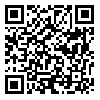1. De Graaf DC, Vanopdenbosch E, Ortega-Mora LM, Abbassi H, Peeters JE. A review of the importance of cryptosporidiosis in farm animals. Int J Parasitol.1999; 29(8):1269-1287. [
DOI:10.1016/S0020-7519(99)00076-4]
2. Santin M, Trout JM, Xiao L, Zhou L, Greiner E, Fayer R. Prevalence and age-related variation of Cryptosporidium species and genotypes in dairy calves. Vet Parasitol. 2004; 122(2): 103-117. [
DOI:10.1016/j.vetpar.2004.03.020]
3. Petersen C. Cryptosporidiosis in patients infected with the human immunodeficiency virus. Clin Infect Dis.1992; 15(6): 903-909. [
DOI:10.1093/clind/15.6.903]
4. Jenkins MC, D' Brien C, Trout J, Guidry A, Fayer R. Hyperimmune bovine colostrum specific for recombinant Cryptosporidium parvum antigen confers partial protection against cryptosporidiosis in immunosuppressed adult mice. Vaccine.1998; 17(19): 2453-2460. [
DOI:10.1016/S0264-410X(98)00369-7]
5. Xiao L, Fayer R, Ryan V, Upton SJ. Cryptosporidium Taxonomy: Recent Advances and Implication for public health. Clin Microbial Rev. 2004; 17(1): 72-79. [
DOI:10.1128/CMR.17.1.72-97.2004]
6. Fayer R. Cryptosporidium and cryptosporidiosis. CRC, New York. 1997.
7. Perryman L E, Kegerries K A, Mason P H. Effect of orally administered monoclonal antibody on persistent Cryptosporidium parvum infection in SCID mice. Infect Immun. 1993; 61(11): 4906-8.
8. Martı’n-Go’mez S, A’lvarez-Sa’nchez M A, Rojo-Va’zquez F A. Immunization protocols against Cryptosporidium parvum in ovines: protection in suckling lambs. Vet Parasitol. 2005; 129(1-2): 11-20. [
DOI:10.1016/j.vetpar.2004.11.033]
9. Kobayashi C, Yokoyama H, Neguyen S A, Kodama Y, Kimata T, Izeki M. Effect of egg yolk antibody on experimental cryptosporidium parvum infection in mice. Vaccine. 2004; 23(2): 232-235. [
DOI:10.1016/j.vaccine.2004.05.034]
10. Kuroki M, Ohta M, Ikemori Y, Peralta R C, Yokoyama H, Kodama Y. Passive protection against bovine rotavirus in calves by specific immunoglobulins from chicken egg yolk. Arch Virol. 1994; 138(1): 143-148. [
DOI:10.1007/BF01310045]
11. Mine Y, Kovacs-Nolan J. Chicken Egg yolk antibodies as therapeutics in enteric infectious disease. J Med food. 2002; 5 (3): 159-166. [
DOI:10.1089/10966200260398198]
12. Ruan GP, Ma L, He XW, Meng MJ, Zhou MQ, Hu ZM, et al. Efficient production, purification, and application of egg yolk antibodies against human HLA-A*0201 heavy chain and light chain (β2m). Prot Exp and Purific. 2005; 44(1): 45-51. [
DOI:10.1016/j.pep.2005.03.013]
13. Larsson A, Sjöquist J. Chicken IgY: utilizing the evolutionary difference. Comp Immunol Microbiol Infect Dis. 1990; 13(4):199-201. [
DOI:10.1016/0147-9571(90)90088-B]
14. Bizanov G, Normantine T, Jonauskiene I. Development of antibodies to Sendai virus in chickens and their isolation from yolk. Biologi J A. 2006; 2: 68-71
15. Arrowed MJ, Sterling CR. Comparison of conventional staining methods and monoclonal antibody-based method for Cryptosporidium oocyst detection. J Clin Microbiol. 1989; 27(7): 1490-1495.
16. Lorenzo MJ, Ares-Mazas E, villacorta Martinez de Maturana I. Detection of oocysts and IgG antibodies to Cryptosporidium parvum in asymptomatic adult cattle. Vet Parasitol. 1993; 47(1-2): 9-15. [
DOI:10.1016/0304-4017(93)90171-I]
17. Bizanov G, Jonauskiene I. Production and purification of IgY from egg yolk after immunization of hens with pig IgG. Bull Vet Inst Pulawy. 2003; 47(2): 403-410.
18. Tini M, Jewel UR, Camendish G, Chilov D, Cassmann M. Generation and application of chicken egg-yolk antibodies. Comp Biochem Physiol A Mol Integr Physiol. 2002; 131: 569-574. [
DOI:10.1016/S1095-6433(01)00508-6]
19. Harp JA, Goff JP. Protection of calves with a vaccine against Cryptosporidium parvum. J Parasitol. 1995; 81(1): 54-57. [
DOI:10.2307/3284005]
20. Nord J, Ma P, Dijohn D, Tzipori S, Tacket CO. Treatment with bovine hyper immune colostrums of Cryptosporidial diarrhea in AIDS patients. AIDS. 1990; 4(6): 581-584. [
DOI:10.1097/00002030-199006000-00015]
21. Perryman LE, Kapil SJ, Jones ML, Hunt EL. Protection of calves against cryptosporidiosis with immune bovine colostrum induced by a Cryptosporidium parvum recombinant protein. Vaccine. 1999; 17(17): 2142-2149. [
DOI:10.1016/S0264-410X(98)00477-0]
22. Reperant J M, Naciri M, Iochmann S, Tilley M, Bout DT. Major antigens of Cryptosporidium parvum recognized by serum antibodies from different infected animal species and man. Vet Parasitol. 1994; 55(1-2): 1-13. [
DOI:10.1016/0304-4017(94)90051-5]
23. Shayan P, Ebrahimzade E. Recombinant Cryptosporidium parvum P23 as a target for the detection of cryptosporidium- specific antibody in calf sera. Parasitol Res. 2008; 103(5): 1207-1211. doi: 10.1007/s00436-008-1117-y. [
DOI:10.1007/s00436-008-1117-y]
24. Riggs MW, Cama VA, Leary HL, Sterling CR. Bovine antibody against Cryptosporidium parvum elicits a circumsporozoite precipitate-like reaction and has immunotherapeutic effect against persistent cryptosporidiosis in SCID mice. Infect Immun. 1994; 62(5): 1927-1939.









